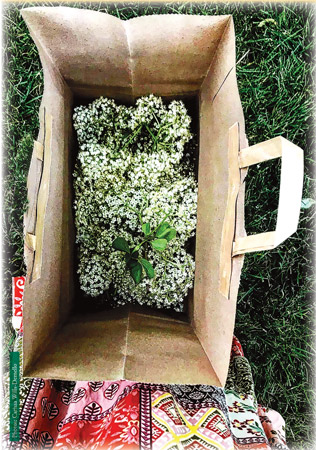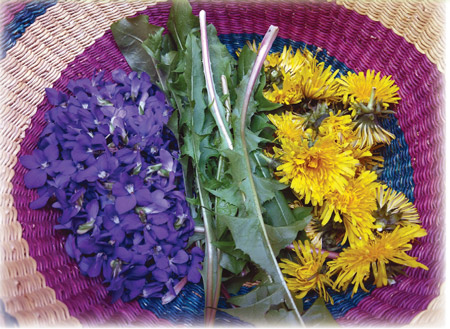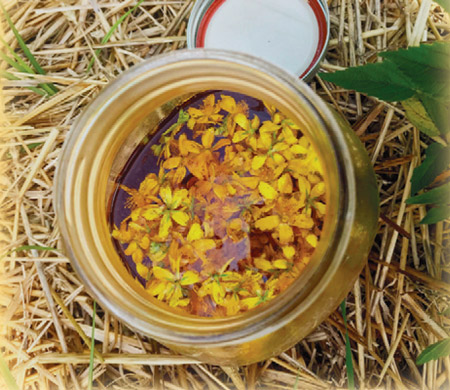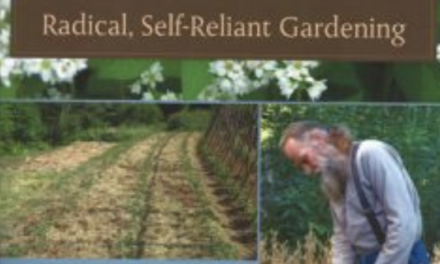Photos and words by Carissa Davenport.

It’s been said that love is the one thing that grows the more it’s shared. Well, perhaps there are two things, love, and herbs! That is, unless they are synonymous. Which is quite possible. Summer’s bounty of medicinal herbs is all the more plentiful with every harvest. This time of abundance is brief and glorious, so there’s no time like the present to get cultivating and creating in the garden.
Once-delicate wisps of spring seedlings should now be thriving in their full-grown glory, displaying showy blooms and fragrant greenery. A harvest of fresh vegetables is delicious, but medicinal herbs are utterly magical. It poses the question; how can we nurture and preserve this beauty for year-round enjoyment?
Cultivate
Hand-cultivation connects our bodies with the soil we rely upon. It’s where gardening begins. More than a preparatory step, cultivation is a season-long practice. Removing competing weeds around the base of plants reduces potential competition for nutrients and supports proper air flow. Hand cultivation loosens the soil around the base of the plant to help the roots breathe, increasing water absorption and the bioavailability of nutrients. Plants love this attention. In the words of herbalist Richo Cech, “within minutes, the human will be humming, the humus will be humming, the plants will be humming, and the humming-birds will be humming. A good gardener doesn’t need to differentiate between all these hums.” A humming garden is a productive garden. And a productive garden is a place from which creativity springs forth.
Nourish
While all plants respond to quality attention, medicinal herbs also happen to be notably resilient. They’re not a picky lot when it comes to soil conditions or care. That’s good news for busy bees with a laundry list of summer to-dos. But that doesn’t mean our herbs don’t benefit from a dose of nourishment! For all living things, water is life. A good dosing an evening a week should do the trick.
Healthy soil will preserve and use that water more efficiently. Healthy soil means living soil. A microscopic glance at a speck of dirt would reveal a bustling world of tiny beasts. (Read Teaming With Microbes by Jeff Lowenfels and Wayne Lewis for the surprisingly enthralling story of the soil food web.) To save the thesis on microbiology, let’s keep it simple: add compost to your garden. Compost is more than a dose of nutrients. It inoculates the soil with bacteria, fungi, and other beneficial microbes that digest and produce bioavailable nutrients for your plants, so long as you leave the chemicals on the shelf. If compost wasn’t added during spring planting, mix a bit around the base of the plant. Visit your local greenhouse for quality organic compost.

Harvest
At last, the moment that all efforts lead to… gathering summer’s bounty. In this time of prolific growth, a plant’s energy is most active in their leaves and flowers. These are the parts to harvest in summer. Save root harvest for fall when the energy returns to the ground. Those bushy beds of green are calling to be used, and many medicinal herbs respond surprisingly well to being cut in half. In fact, the more they’re harvested, the more they grow. If you let a plant go to seed, its reproductive cycle (and thus growth) is over. So keep picking!
Each medicinal herb has a unique use, and different parts may be used medicinally. Common plants to harvest for the flowers include: chamomile, calendula, lavender, yarrow, rose, and St. John’s wort. Some plants to harvest for the leaves include: lemon balm, thyme, oregano, tulsi, peppermint, sage, catnip, rosemary, and anise hyssop. When harvesting leaves, flowers can certainly be included. But aim to harvest before plants go to flower, so that the medicinal compounds remain concentrated in the leaves. For medicinal flowers, harvest just after opening, while the blooms are bright and vital. All medicinal herbs will be most potent around late morning. Harvest on a sunny day once dew has dried, but before the sun has shone long enough to zap the plant of its vitality.

Preserve
Herbs support health and healing in countless ways. In the summer, the simple act of cultivation feeds the spirit. From autumn to spring, preserved plants offer the energy of sun and soil back to us while their roots rest under leaves and snow. Teas, tinctures, honeys, and salves offer July’s bliss during the dreariest December.
Here are a few methods of preservation to try. Consider them an open door into creative possibility.
—–—————————-
Extraction – A solution of herbs and liquid (a “solvent”). The solvent could be alcohol, vinegar, or glycerine. This is what most know as a tincture. Here’s all you need to know. Grab a jar and head for the garden. Loosely fill said jar to the top with fresh herbs, then fill the remaining space with your solvent of choice. Brandy and vodka make great solvents for a potent extraction. Looking for a kid-friendly recipe? Try glycerine. The sweet, viscous liquid is a plant by-product that makes an easy-to-use extract. Hoping to put extracts to use in the kitchen? Try vinegar. A vinegar extract will result in a flavor-packed acid great for stirring into soups or drizzling on salads. No matter the extract, the rest of the process is the same. Label and seal the jar, letting it steep in a dark cool place for one month. Strain and enjoy. Just make sure to know the plant you’re working with first. Some plants, like St. John’s wort, have contraindications you want to be aware of, so doing your homework is key,
—–—————————-
Infusion – Infused oils have such an indulgent feel to them. They were my first introduction to herbalism in Fiji, where fragrant blossoms were infused into coconut oil for soothing sun-kissed or reef-worn skin. Sun-infused oils are a most joyful herbal experience. They follow a similar process as extractions. In this process, the sun does all the work. Get a jar brimming with fresh herbs and cover that colorful mess with oil (jojoba is luxurious). Close it well and set in a sunny windowsill for one month. Yarrow, calendula, and lavender are sublime choices for a soothing topical oil for sunburns and abrasions. Oregano, thyme, and sage are perfect to infuse in olive oil for cooking. At the month’s end, strain through cheesecloth, compost the herbs, and store oil in a cool place. Because water content could spoil the oil, it’s a good practice to wilt (partially dry) herbs before infusing them. At the very least, harvest when the sun is high enough to dry the herbs, but not so high that it will scorch them.
—–—————————-
Dehydration – Drying fresh plant material is a versatile way to extend your herbal bounty. Dry culinary herbs like oregano and thyme for an incomparable seasoning. Dry herbs like peppermint and chamomile for a tea like no other. Dehydrated herbs are also a ticket to winter euphoria when tied up in a sachet and steeped in baths and foot soaks. (You’ll be happy to remember that one, come January!)
No need for fancy dehydration ovens or big drying sheds. A paper bag, upcycled screen, or a simple hanging drying rack will do the trick. The rule with herbalism is to make like nature and use what’s already available! When it’s a paper bag on hand, the process is as easy as: pick herbs, close bag. Shake contents regularly so they don’t stick together and mold. Low water content herbs like rosemary or thyme do well with this method. To use an old screen, prop it up so air can flow under and over. Between two chairs or on wooden legs works. Spread the herbs in a single layer, allowing for good airflow. Keep out of direct sunlight, which degrades herbs, but in a warm place. Same goes for using a hanging drying rack. Find one online; there are styles that fold to the size of a frisbee and store easily in the off-season. Once herbs are dry, crumble with hands or cut with scissors, removing stems as needed.
—–—————————-
Once a garden takes off, there’s no slowing her down. Mother Nature loves decadence, and she’ll give back tenfold in response to whatever care is offered. A little water, a gentle touch, a bit of time. Cultivate often, nourish occasionally, water when necessary. And harvest, harvest, harvest! Prepare what you’ll use now and dry what’s left. When the days grow short and the temps fall, a pantry full of dried herbs will feed the spirit and body. Stay tuned for the Autumn edition of Herbalism Through the Seasons, where we’ll explore the multitude of ways to create with dried herbs!
Want to learn more about medicinal herb gardening and crafting? Check out The Medicinal Herb Grower and Making Plant Medicine by Richo Cech, Medicinal Herbs: A Beginner’s Guide and Herbal Recipes for Vibrant Health by Rosemary Gladstar, Move Like a Gardener by Deb Soule, and Grow Your Own Medicine by Ava Green. These resources are worth having on your bookshelf to slowly page through for years to come.
Carissa Wills-DeMello is a practicing herbalist and proud owner of Town Farm Tonics. When she’s not cultivating her garden or reading in the sunshine, you’ll find her concocting delicious herbal products found in several stores around the South Coast.






